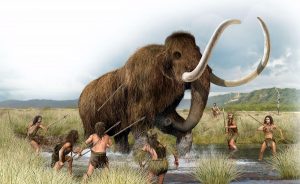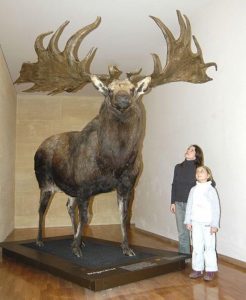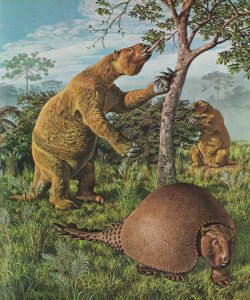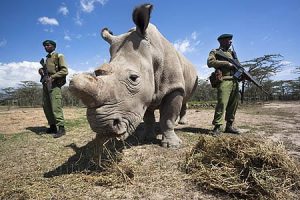Last Sunday was Earth day, the one day a year when we human beings try to think about how we’re treating our home planet and consider whether we could perhaps do a little better. According to a new study of the damage that has been caused by human activity over the last 200,000 years, that’s basically our entire existence, we have a lot of work to do.
The article by the University of New Mexico’s Felisa Smith and the University of Nebraska-Lincoln’s Kate Lyons follows the decline and extinction of species of large mammals on a continent by continent basis. Starting first in Africa more than 125,000 years ago and moving on to Europe, Asia, Australia around 35,000 years ago and finally the Americas 12,000 years ago every continent saw mass extinctions of large mammals starting from the time our ancestors first arrived.
The list of species that were hunted to extinction before the dawn of history includes well known creatures like the Wholly Mammoth and the Irish Elk along with lesser known, but just as large and impressive beasts like the Megatherium, a huge ground dwelling sloth and the Glyptodon, an armadillo the size of a small car. In addition to the herbivores many species of predators also disappeared once humans arrived on the scene . These included the saber toothed tiger and the monstrous cave bear. (See images throughout this post).


It’s easy to understand why early humans should preferentially hunt larger prey, as Doctor Lyons says “If you kill a rabbit you’re going to feed your family for a night. If you can kill a large mammal, you’re going to feed your village.” Add to that the facts that large animals are simply easier to find and that there are fewer of them and the path to extinction becomes clear.

So it seems that human beings have had a deadly impact on our fellow creatures as long as we’ve existed, and that impact has only grown more lethal as our technology has advanced. There is scarcely a large mammal species left on Earth today that isn’t endangered. Elephants, Rhinos, Tigers are all on the verge of extinction, along with many other species.

In fact Smith and Lyons estimate that in as little as 200 years the largest surviving land mammal may be the domestic cow, and that’s only because we raise them for food. Are we heading towards the day when the only life left on Earth will be our pets, our parasites and ourselves? Let’s hope humanity finds the wisdom to use our technology to find some way for our fellow creatures to survive. A world without Elephants, Giraffes, Buffalo etc, doesn’t sound like much of a world to me.
Now it may have just been a coincidence but the very day I first read about the paper by Doctors Smith and Lyons there also came the news that the only surviving male Northern White Rhino had died at a wildlife reserve in Kenya. At the age of 45 Sudan as he was known had contracted an infection in his right hind leg and back. Due to his age treatments for the infection had little success and as Sudan’s health declined it was decided to put him to sleep.

The Northern White Rhinos once dominated the grasslands of east Africa but by 1960 only 2,000 remained, by 2009 only seven and now there are just two old females. Another species that is now gone because of nothing more than human greed.
